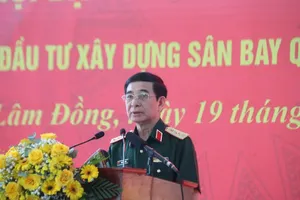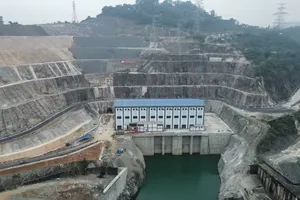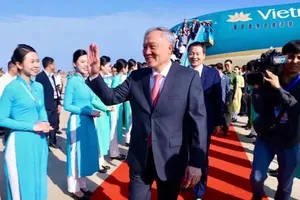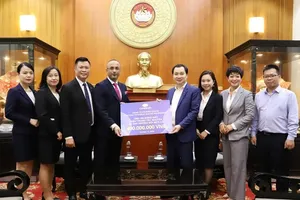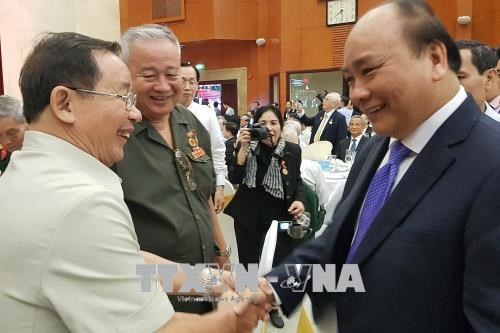
The event was attended by Prime Minister Nguyen XuanPhuc, Chairwoman of the National Assembly Nguyen Thi Kim Ngan, President of the Vietnam Fatherland Front Central Committee Tran Thanh Man and many former leaders.
Secretary of the Ho Chi Minh City Party Committee Nguyen ThienNhan said the meeting aimed to show gratitude for heroes, martyrs, soldiers and families who served the country’s revolutionary cause.
They shed their blood for national independence and reminded Vietnamese people of their heroic history, he said.
The Tet Offensive began in the early morning of January 31 in 1968 when liberation forces simultaneously launched attacks on American and Southern Vietnamese bases in cities such as Hue, Da Nang, QuyNhon and SaiGon, and hundreds of towns from Quang Tri to Ca Mau.
The offensive helped destroy huge amounts of facilities and logistics used by the US and the Southern regime’s armies.The seven-month long campaign ended with tens of thousands of enemy troops dead, 600 strategic hamlets destroyed and 100 communes liberated with a population of 1.6 million people.
People in rural areas also took this opportunity to rise up against the US-backed government’s administration.
Sai Gon-Gia Dinh (now HCM City), the headquarters of the US-backed Southern regime, was a focus of the offensive.
The Tet Offensive 1968 marked a strategic turning point for the resistance war against the US and its allies. It caused the US a ‘sudden shock’, disrupting their strategic plan, shaking the White House, the Pentagon and all of the US and forced President Johnson to deescalate the war and agree to sign the historic Paris Peace Accord. The victory also helped lead to the liberation of southern Vietnam and the unity of the country in 1975.
The 1968 Tet Offensive affirmed the outstanding, visionary leadership of the Party and President Ho Chi Minh.
It promoted patriotism, national pride and the will to overcome all difficulties to fulfill the task of building and protecting the country.
Secretary of the Ho Chi Minh City Party Committee Nguyen ThienNhan said the meeting aimed to show gratitude for heroes, martyrs, soldiers and families who served the country’s revolutionary cause.
They shed their blood for national independence and reminded Vietnamese people of their heroic history, he said.
The Tet Offensive began in the early morning of January 31 in 1968 when liberation forces simultaneously launched attacks on American and Southern Vietnamese bases in cities such as Hue, Da Nang, QuyNhon and SaiGon, and hundreds of towns from Quang Tri to Ca Mau.
The offensive helped destroy huge amounts of facilities and logistics used by the US and the Southern regime’s armies.The seven-month long campaign ended with tens of thousands of enemy troops dead, 600 strategic hamlets destroyed and 100 communes liberated with a population of 1.6 million people.
People in rural areas also took this opportunity to rise up against the US-backed government’s administration.
Sai Gon-Gia Dinh (now HCM City), the headquarters of the US-backed Southern regime, was a focus of the offensive.
The Tet Offensive 1968 marked a strategic turning point for the resistance war against the US and its allies. It caused the US a ‘sudden shock’, disrupting their strategic plan, shaking the White House, the Pentagon and all of the US and forced President Johnson to deescalate the war and agree to sign the historic Paris Peace Accord. The victory also helped lead to the liberation of southern Vietnam and the unity of the country in 1975.
The 1968 Tet Offensive affirmed the outstanding, visionary leadership of the Party and President Ho Chi Minh.
It promoted patriotism, national pride and the will to overcome all difficulties to fulfill the task of building and protecting the country.
